What is French Polynesia? How big an area is French Polynesia? What places In French Polynesia are note worthy? Are there other Polynesias?
French Polynesia is an overseas collectivity of France and its sole overseas country, located in the South Pacific Ocean. It consists of 121 geographically dispersed islands and atolls stretching over more than 2,000 kilometers (1,200 mi) 1. The total land area of French Polynesia is 3,521 square kilometers (1,359 sq mi) 1. French Polynesia covers an area as large as Europe, it is 99% ocean and lagoons.

Some noteworthy places in French Polynesia include Tahiti, Bora Bora, Moorea, Huahine, and the Marquesas Islands11.Polynesia is a region in the central and southern Pacific Ocean, generally defined by the Polynesian Triangle, which connects the points of Hawaii, New Zealand, and Easter Island4.
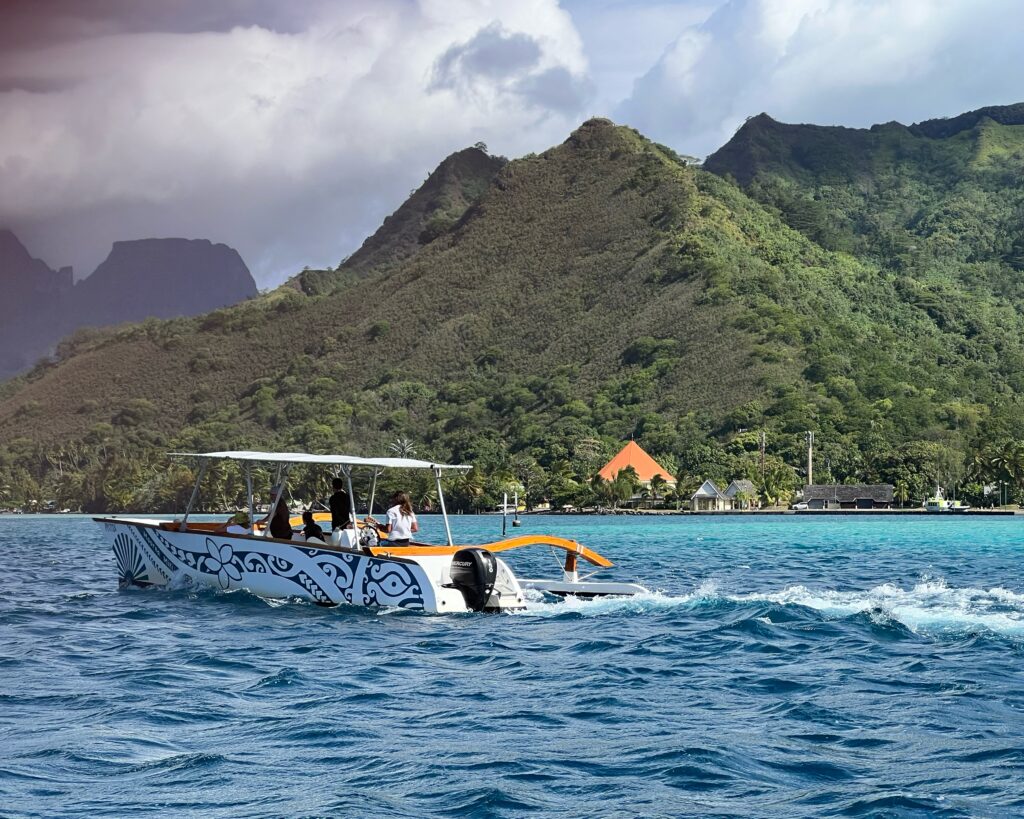
Other main island groups within the Polynesian Triangle include Samoa, Tonga, the Cook Islands, Tuvalu, Tokelau, Niue, Wallis and Futuna, and French Polynesia4.
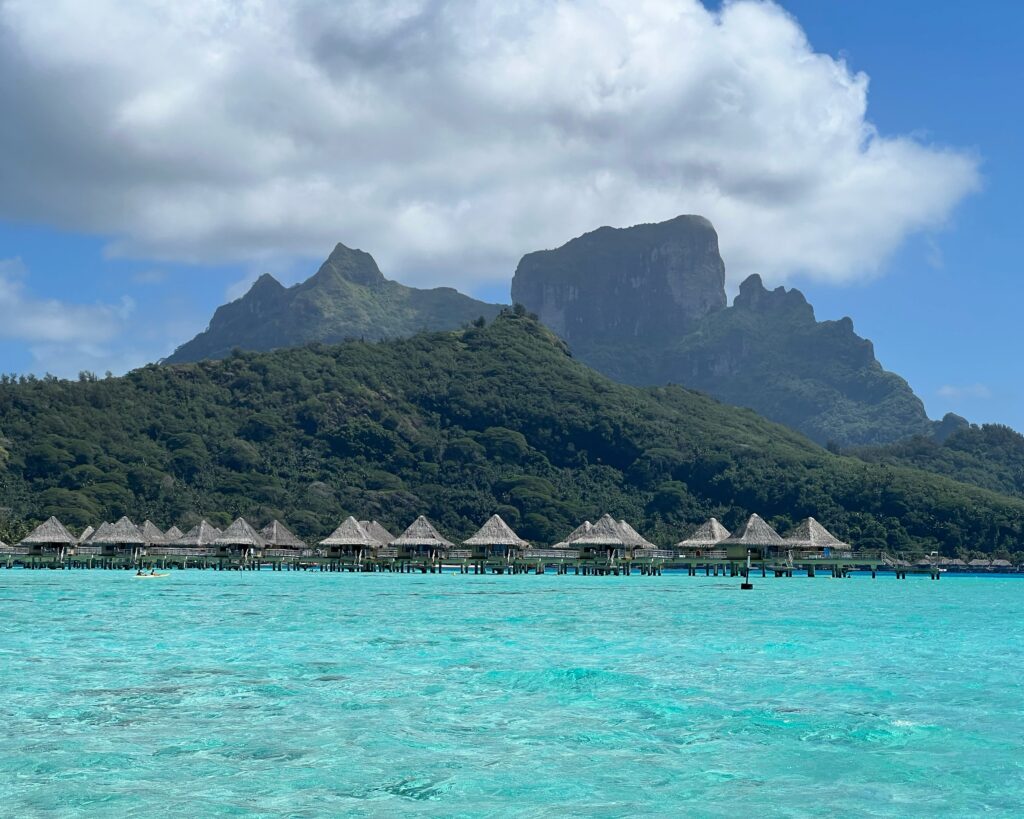
French Polynesia offers a wide range of popular tourist attractions, including natural wonders, cultural experiences, and outdoor activities. Some of the top attractions are:
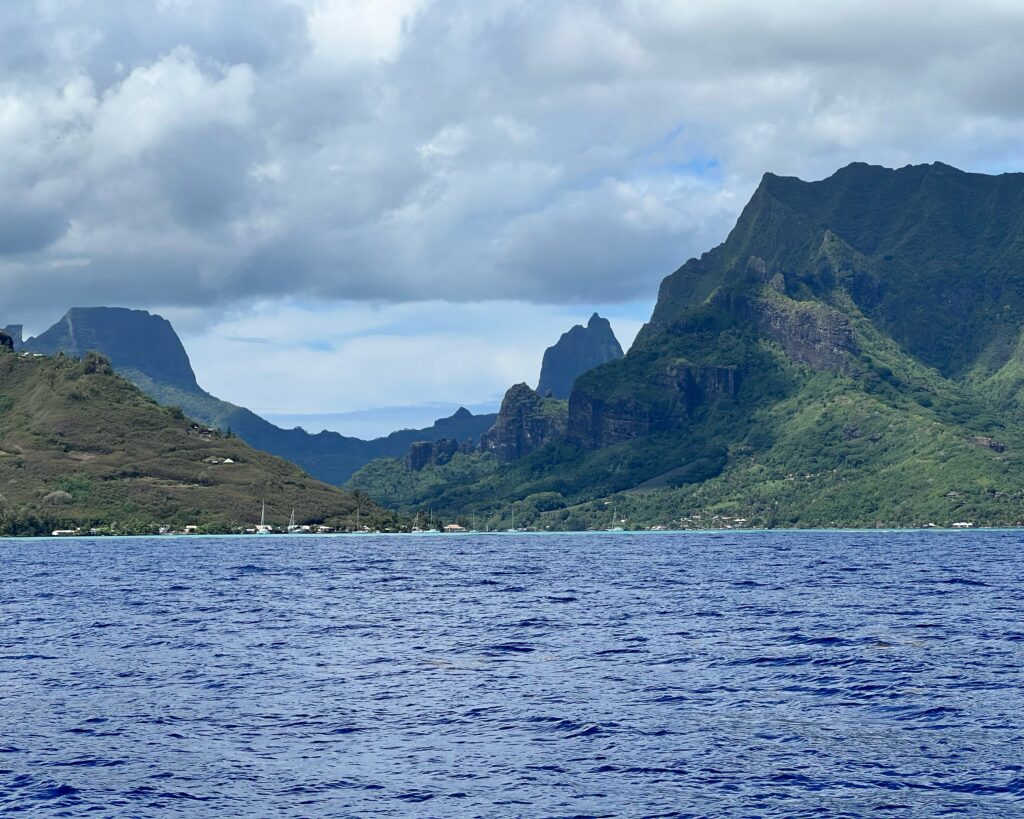
- Matira Beach: A beautiful beach on Bora Bora, known for its white sand and crystal-clear waters2.
- Belvedere Lookout: A scenic viewpoint on Moorea, offering panoramic views of the island’s lush landscape1.
- Bora Bora Lagoonarium: A natural aquarium where visitors can swim with marine life, including sharks and rays2.
- Magic Mountain: A viewpoint on Moorea, offering stunning views of the island and its surrounding lagoon1.
- Iipona: One of the best-preserved archaeological sites in French Polynesia, featuring monumental tiki statues6.
- Paofai Gardens: A beautiful garden in Papeete, Tahiti, perfect for a relaxing stroll4.
- Hiking: French Polynesia offers numerous hiking trails, such as Mount Aorai on Tahiti, Moorea peaks, and Maupiti4.
- Fakarava Atoll: Part of the Tuamotu Archipelago, Fakarava is known for its cultured black pearls and offers several pearl retailers3.
- Tahitian dance performances: Experience the passion and energy of traditional Tahitian dancers3.
- Local cuisine: Taste the unique blend of French, Chinese, and Italian influences in Polynesian dishes4.
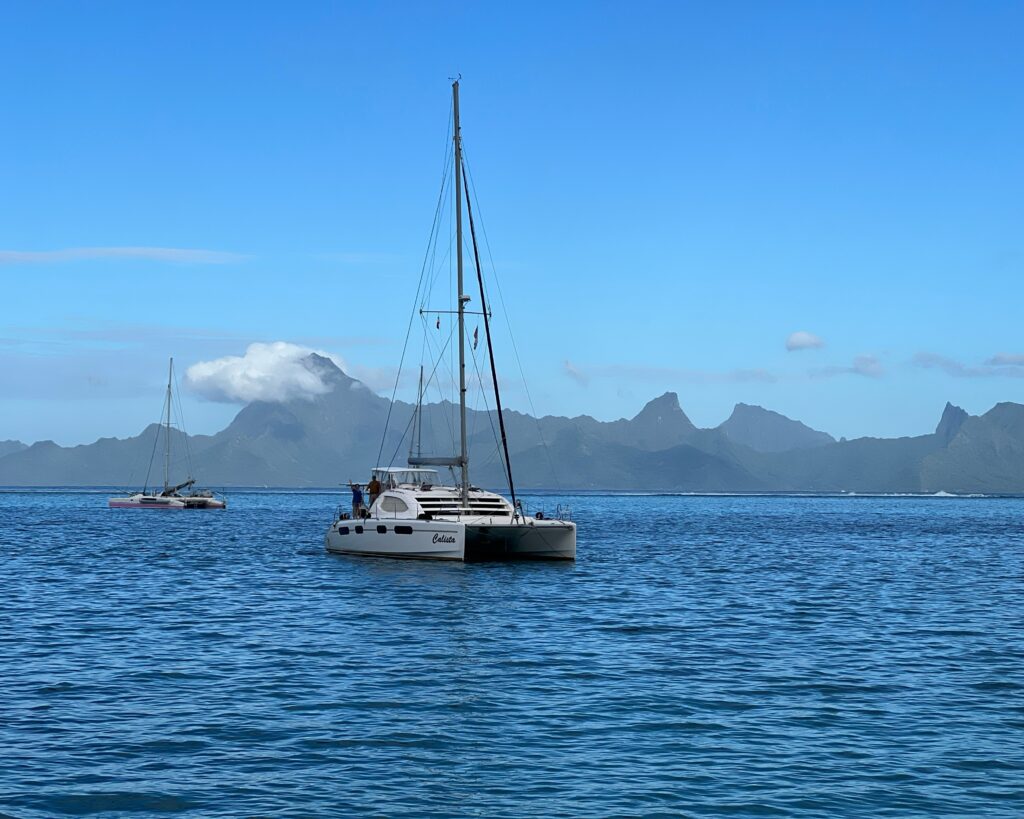
These attractions showcase the natural beauty, rich culture, and outdoor activities that make French Polynesia a popular tourist destination.
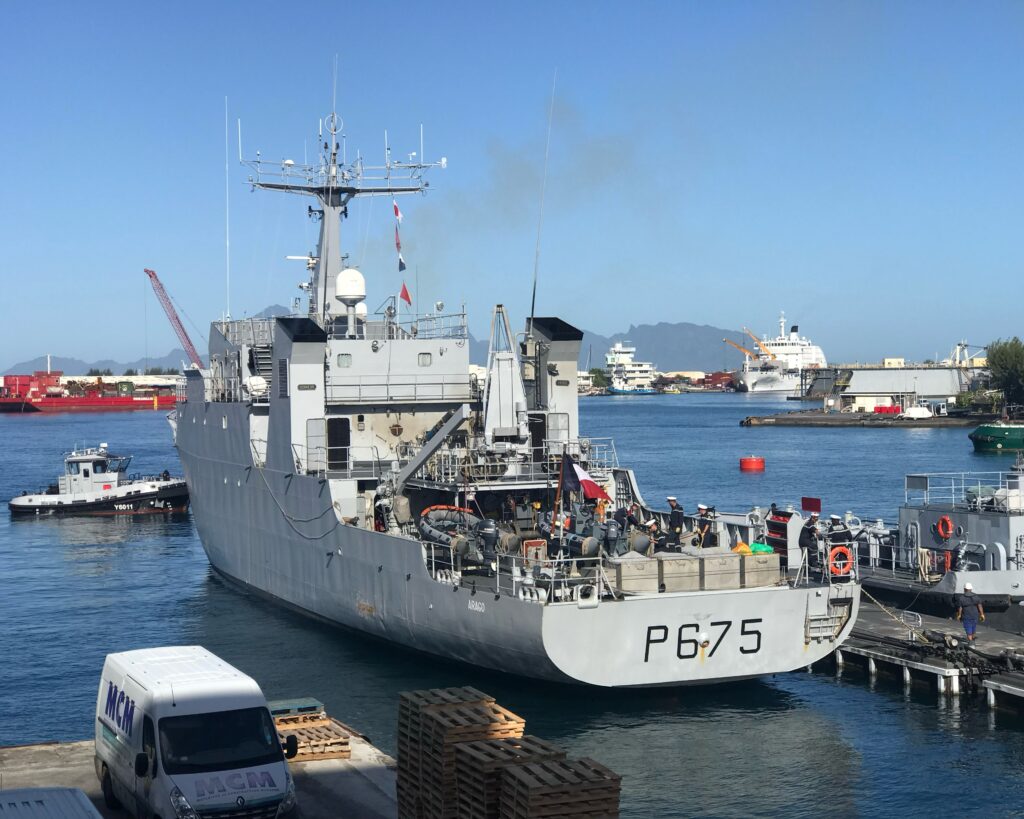
The French Navy protects French Polynesia, as it is an overseas collectivity of France. The French Navy has vessels based in the territory, including surveillance frigates and patrol ships, to ensure the protection of national interests and maritime sovereignty in the region15.
Residents of French Polynesia are French citizens and hold French passports12. As French citizens, they have the right to live anywhere in France and enjoy the same rights and privileges as citizens living in mainland France2.
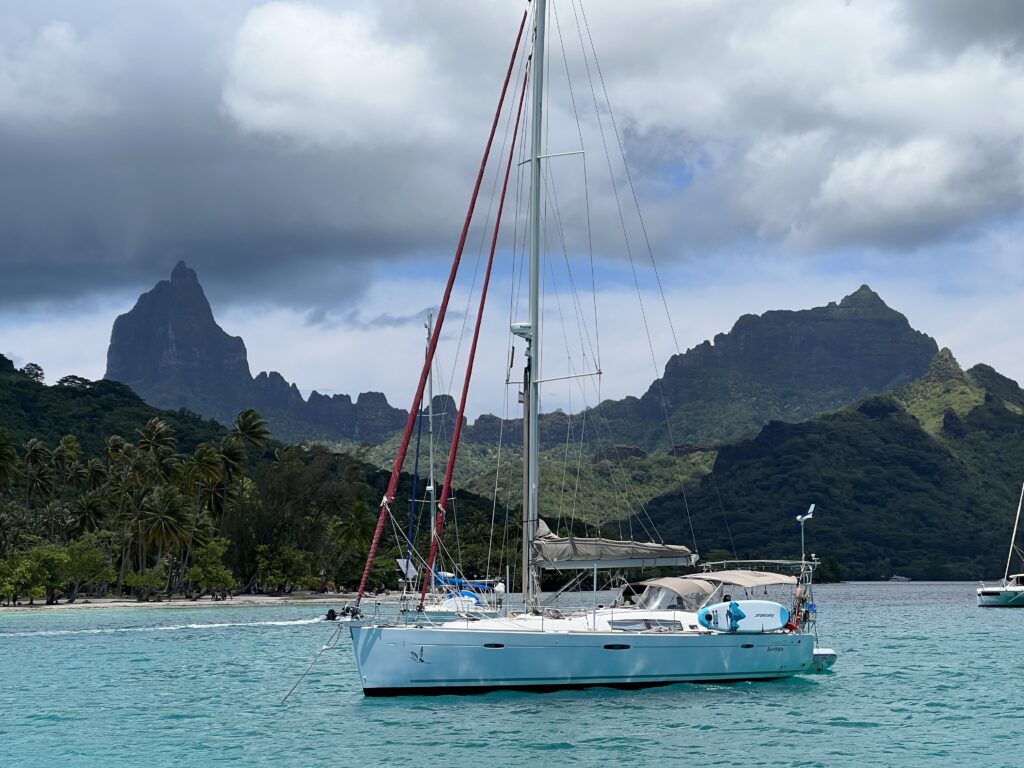
In French Polynesia, high schools are located on several islands, not just on Tahiti. For example, Raiatea is the only French Polynesian island outside of Tahiti with a secondary school[4]. Students from neighboring islands such as Bora-Bora, Tahaa, Maupiti, or Huahine come to Raiatea for their secondary education[4].
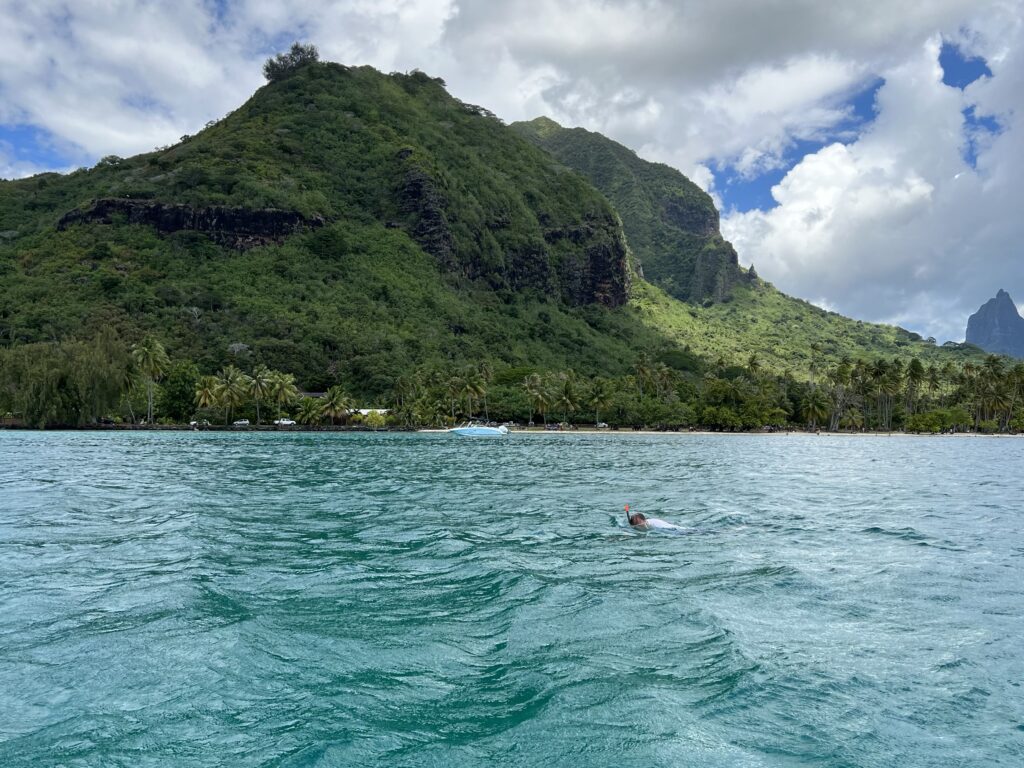
The French government provides free and mandatory education through public schools in French Polynesia[6]. Schooling is compulsory until age 16, and education is offered in French, which is the official language of French Polynesia[1][6]. Although some schools may provide a few hours per week of Tahitian language instruction[2], the primary medium of instruction is French. The six years of primary education are funded by the government, and there are church- and government-run secondary schools6.
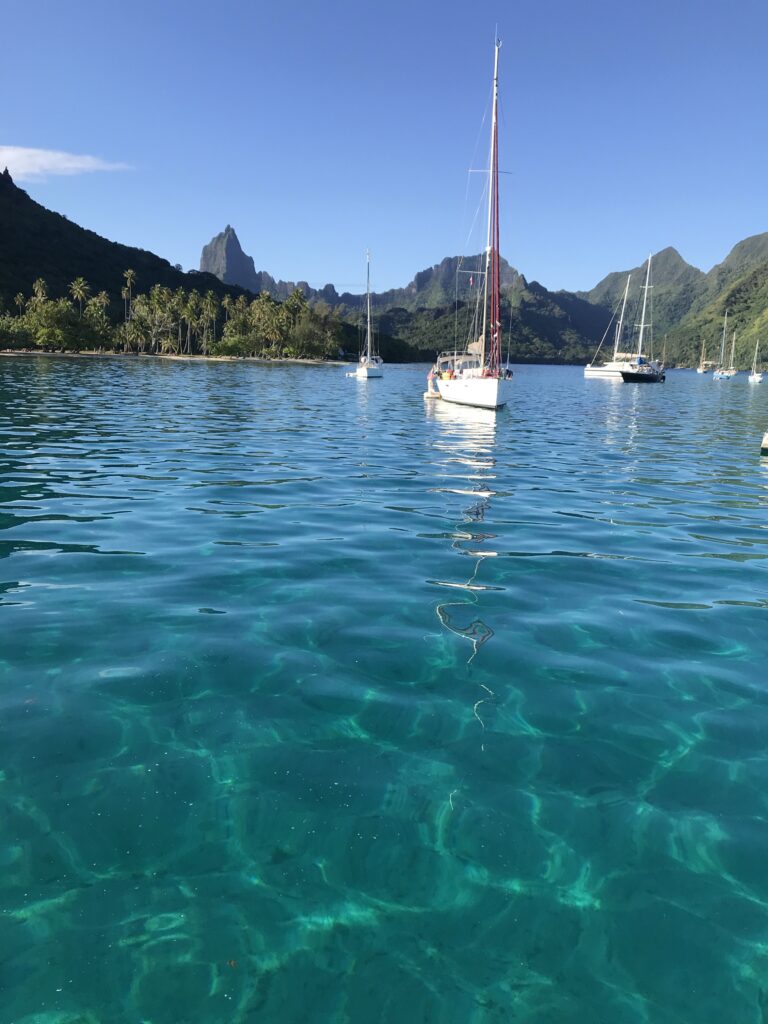
The French government does provide financial assistance to students from the outer islands who need to travel to Tahiti or other islands for their education[3]. This assistance includes transportation and housing[3].
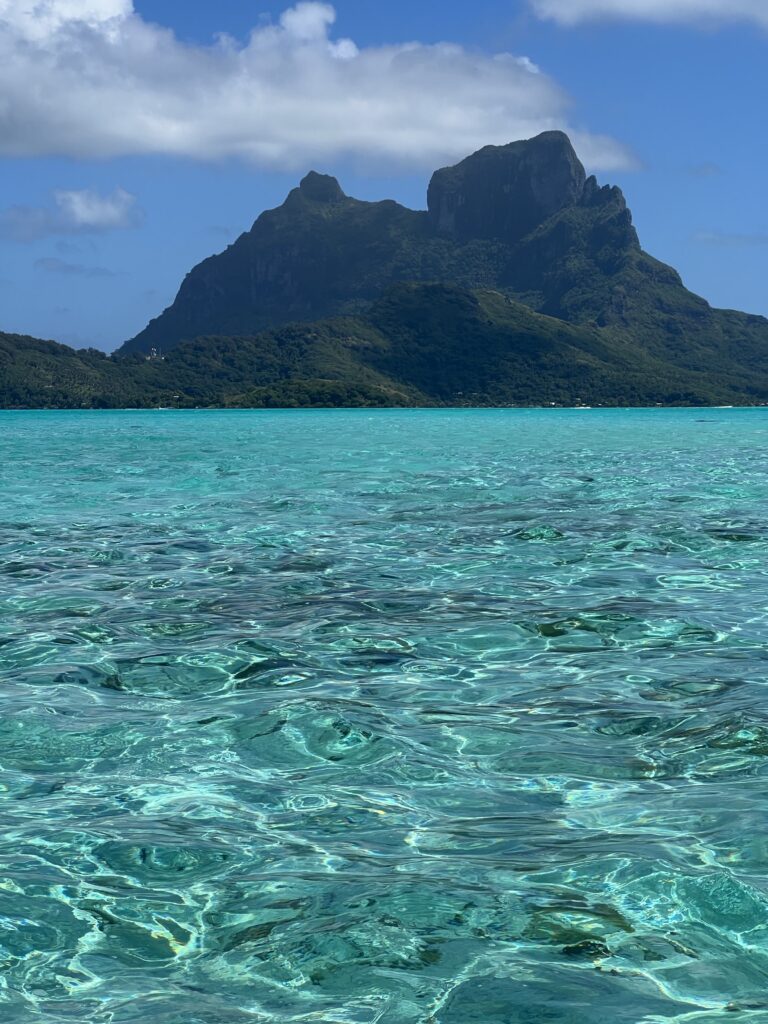
The University of French Polynesia, located in Papeete, is the only tertiary-level institution in the country6.It was established in 1987 as part of the French University of the Pacific and took its present name in 1999 when the university split into two entities, one in French Polynesia and one in New Caledonia6.
What attractions are there on Tahiti?
Tahiti offers a wide range of attractions, including natural wonders, cultural experiences, and outdoor activities. Here are some of the top attractions in Tahiti:
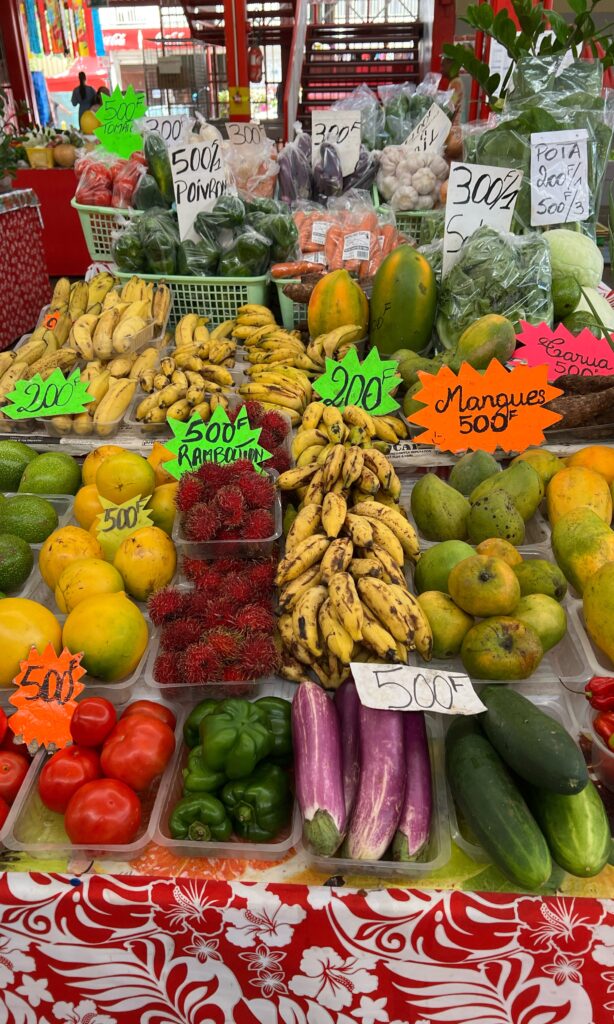
- Papeete and its market: The capital city of Tahiti, known for its vibrant market selling local crafts, flowers, and fresh produce12.
- Faarumai Waterfalls: A beautiful waterfall located in the lush jungle of Tahiti12.
- Moorea: A nearby island known for its stunning beaches, hiking trails, and cultural experiences13.
- La Plage de Maui: A beautiful public beach with crystal-clear waters1.
- Municipal Market: A bustling market in Papeete selling local crafts, flowers, and fresh produce2.
- Museum of Tahiti and the Islands: A museum showcasing the history, culture, and natural wonders of French Polynesia2.
- Arahoho Blowhole: A natural wonder where waves crash into a lava tube, creating a spectacular spray25.
- Terevau: A ferry service connecting Tahiti with nearby islands, such as Moorea and Raiatea2.
- Tahitian dance lessons: Experience the passion and energy of traditional Tahitian dance4.
- Wine Cellar Tour with Tasting: Discover French Polynesia’s only winery, Dominique Auroy’s Vin de Tahiti4.
- Huahine Natural Aquarium Excursion: Explore the island of Huahine and visit a natural aquarium4.
- Snorkeling and Ray Feeding: Experience the abundant marine life of French Polynesia4.
- Les Trois Cascades: A beautiful waterfall located in the lush jungle of Tahiti6.
- Overwater bungalows: Stay in a luxurious overwater bungalow and enjoy the stunning views of the lagoon6.
- Huahine: A nearby island known for its ancient marae, vanilla plantations, and beautiful beaches46.
These attractions showcase the natural beauty, rich culture, and outdoor activities that make Tahiti a popular tourist destination.

What attractions are there on islands near Tahiti?
There are several attractions on the islands near Tahiti, particularly on Moorea, Bora Bora, and Raiatea. Some of the top attractions on these islands include:
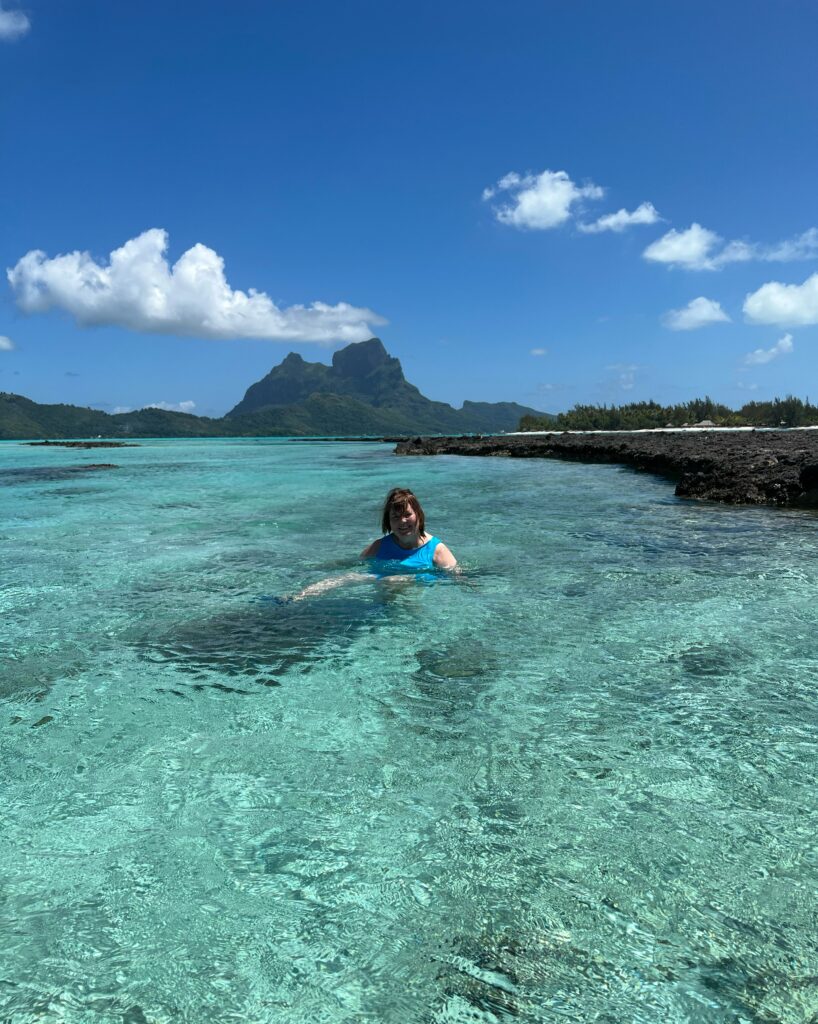
Moorea:
- Belvedere Lookout: A scenic viewpoint offering panoramic views of Opunohu Valley and Cook and Opunohu Bays6.
- Magic Mountain: A viewpoint offering stunning views of the island and its surrounding lagoon2.
- Tiki Village Cultural Center: A cultural center showcasing traditional Polynesian life, crafts, and dance performances2.
- Temae Beach: A beautiful public beach with crystal-clear waters6.
- Moorea Tropical Garden: A lush garden featuring local plants and flowers2.
Bora Bora:
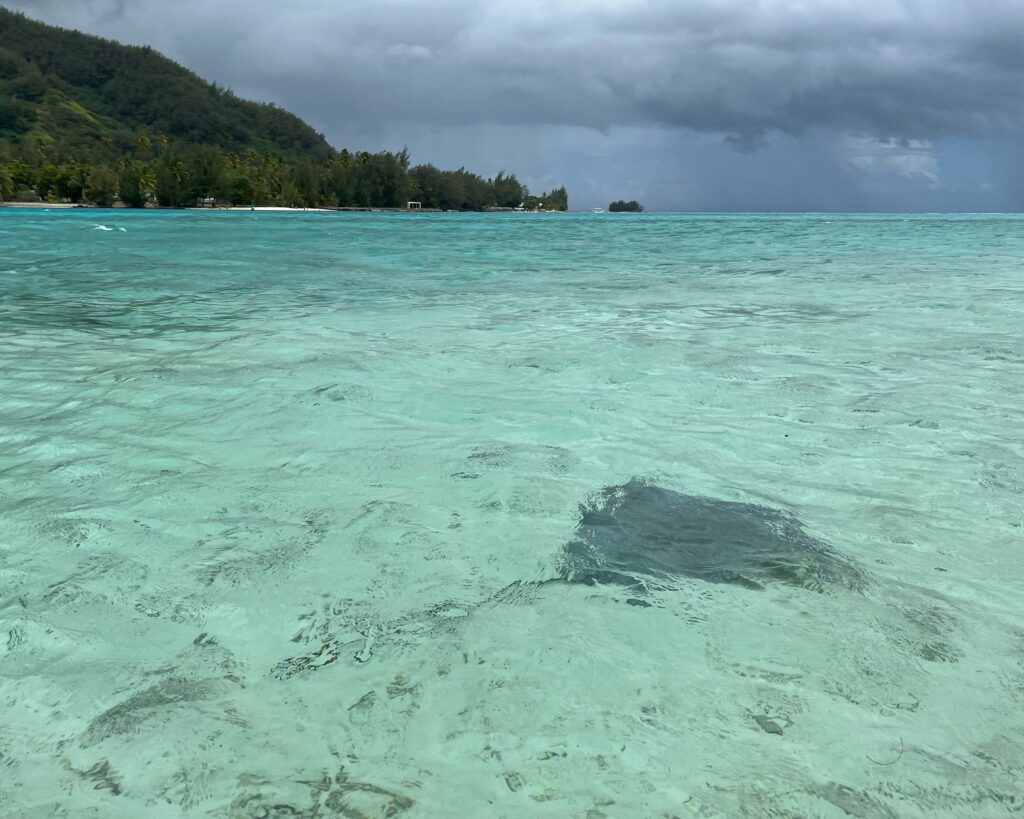
- Matira Beach: A beautiful beach known for its white sand and crystal-clear waters3.
- Bora Bora Lagoonarium: A natural aquarium where visitors can swim with marine life, including sharks and rays3.
- Mount Otemanu: A majestic volcanic peak offering hiking opportunities and stunning views3.
- Leopard Rays Trench: A popular snorkeling spot with abundant marine life3.
- Bora Bora Turtle Sanctuary: A sanctuary dedicated to the protection and rehabilitation of sea turtles3.
Raiatea:
- Taputapuatea Marae: A UNESCO World Heritage Site and an important ancient temple in the Polynesian Triangle4.
- Arahurahu Marae: Another ancient temple site with historical significance4.
- Mount Tapioi: A hiking destination offering panoramic views of the island and surrounding waters4.
- Motu Iriru: A small islet with beautiful beaches and snorkeling opportunities4.
- Mercato Coperto di Uturoa: A local market offering fresh produce, handicrafts, and souvenirs4.
These attractions showcase the natural beauty, rich culture, and outdoor activities available on the islands near Tahiti.
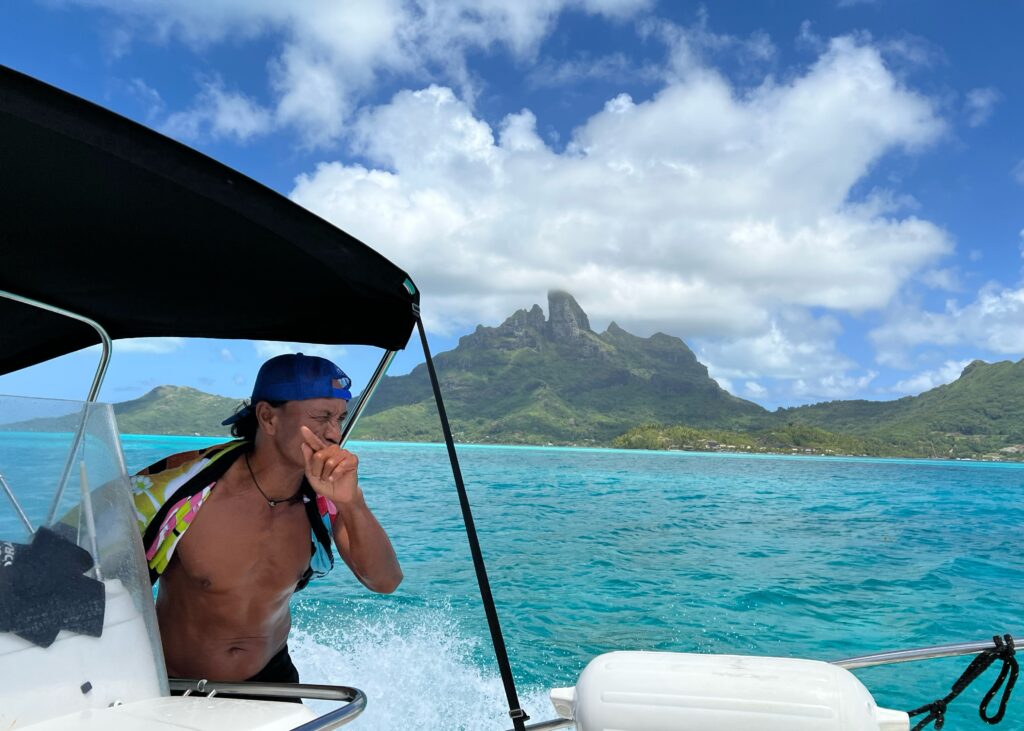
Foreign boats, including those documented in the USA, are allowed to berth in marinas in French Polynesia, such as Moorea, without paying French taxes as long as they follow the permitted stay rules1. If these rules are broken, a substantial fine may be imposed, and import taxes on the yacht may become due1.

Regarding marinas that allow berthing of USA documented vessels for a year, there are marinas in Tahiti, Moorea, and Raiatea11. However, it is essential to check with each marina individually for their specific policies and availability. Keep in mind that long-term berthing may be subject to different regulations and fees.
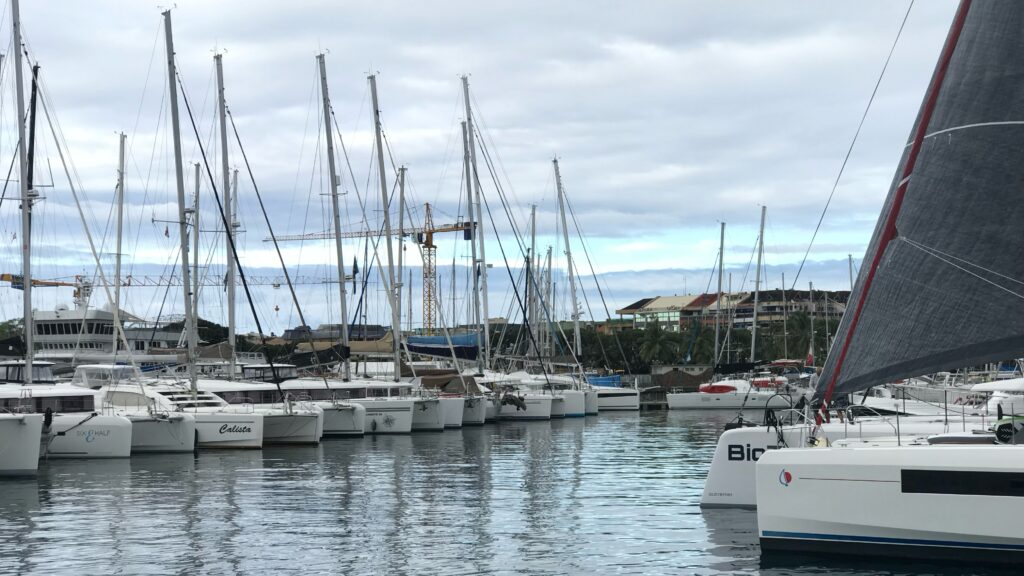
There are some restrictions on foreign boats berthing in French Polynesia. For example, certain mooring areas may be restricted, especially during cargo ship stopovers3. Additionally, Tahiti prohibits anchoring inside Bora Bora Island, allowing only mooring balls and docking5. It is essential to follow the permitted stay rules to avoid fines and import taxes on the yacht2. When planning to berth in French Polynesia, it is crucial to check the specific regulations and requirements for each location.
What tropical fishes can be found in French Polynesia? Are any unique to a particular area? What coral can be found in French Polynesia? When is the best time to see turtles at Bora Bora? Are the waters in French Polynesia unpolluted? Does the purity of the water make French Polynesia a haven for fishes, turtles, and whales?

French Polynesia is home to a diverse range of marine life, including tropical fish, coral, sharks, whales, turtles, and dolphins1. Some of the tropical fish species that can be found in French Polynesia include clownfish, butterflyfish, angelfish, and parrotfish2. Here are some specific areas in French Polynesia where certain fish species can be found:
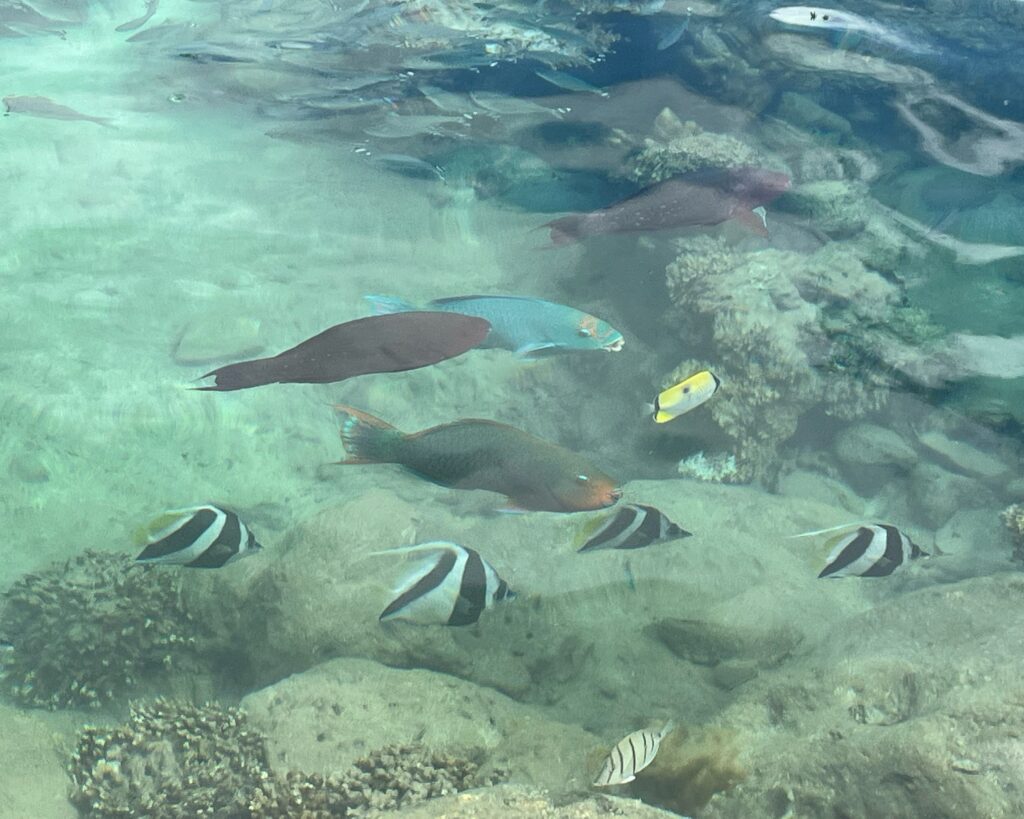
- Clownfish: These fish can be found in the lagoon, the reef, and the ocean2.
- Bonefish, trevally, tuna, mahi-mahi, and bonito: These fish can be caught on deep-sea fishing trips available on virtually every island5.
- Awaous ocellaris: This freshwater fish is native to French Polynesia4.
- Pseudodax moluccanus, Pseudojuloides polynesica, and Pseudolabrus torotai: These fish species can be found in French Polynesia3.
- ‘Uravena: This local fish is only served at the St. Regis Bora-Bora’s Lagoon Restaurant by Jean-Georges5.
- Foa leisi, Eviota deminuta, and Eviota dorsimaculata: These endemic fish species can be found in French Polynesia6.
Some of the coral species that can be found in French Polynesia include staghorn coral, brain coral, and mushroom coral1.
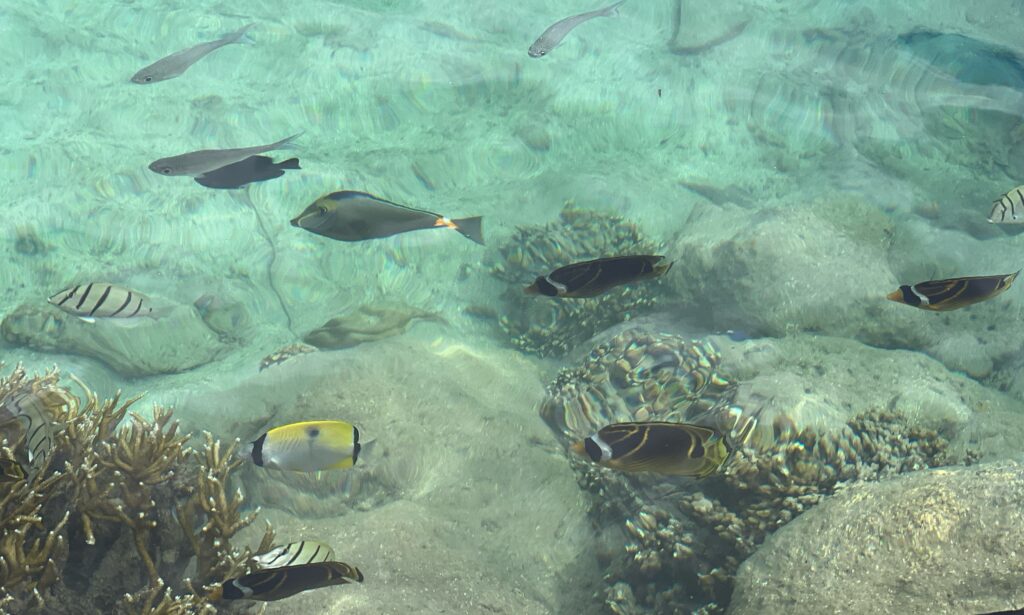
The University of California, Santa Barbara (UCSB) and the University of California, Berkeley are among the universities studying the coral that grows around Moorea.
The UCSB operates the Moorea Coral Reef Long Term Ecological Research Site (MCR LTER), which is a complex of coral reefs and lagoons that surround the island of Moorea in French Polynesia23. The MCR LTER gives scientists the unique opportunity to study the coral reefs surrounding Moorea in real-time, contributing new knowledge while drawing1.
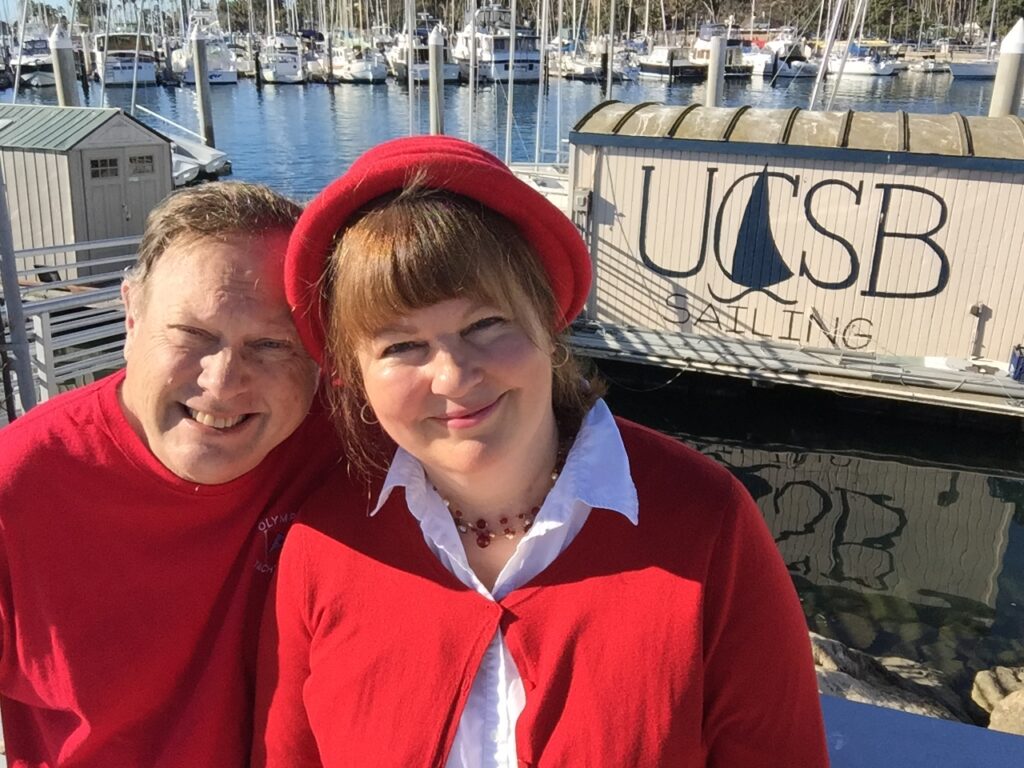
The University of California, Berkeley operates the Richard B. Gump South Pacific Research Station on the island of Moorea, which promotes research, education, and public service in tropical biocomplexity and sustainable development45. The Gump Station organizes Moorea’s longest-running undergraduate field course each fall and leads research programs in a wide range of disciplines from archaeology to marine biology4.
The University of Washington is studying coral around Moorea. Dr. Steven Roberts, a professor at the University of Washington, is conducting research on the response of corals to changing environmental conditions in Moorea using epigenetic techniques4. Additionally, the University of Washington has collaborated with other universities and research institutions to study the coral reefs surrounding Moorea, including the Moorea Coral Reef Long Term Ecological Research Site (MCR LTER) operated by the University of California, Santa Barbara3.

The pristine waters of French Polynesia are a haven for marine life, and the purity of the water makes it an ideal environment for fishes, coral, turtles, and whales.

The best time to see turtles in Bora Bora is from November to April, during the nesting season4.During this time, turtles can be seen laying their eggs on the beaches of Bora Bora, and hatchlings can be seen making their way to the sea4.The waters in French Polynesia are generally unpolluted, and the purity of the water makes it a haven for marine life, including fishes, turtles, and whales1. The government of French Polynesia has implemented several measures to protect the marine environment, including the creation of marine protected areas and shark sanctuaries1.
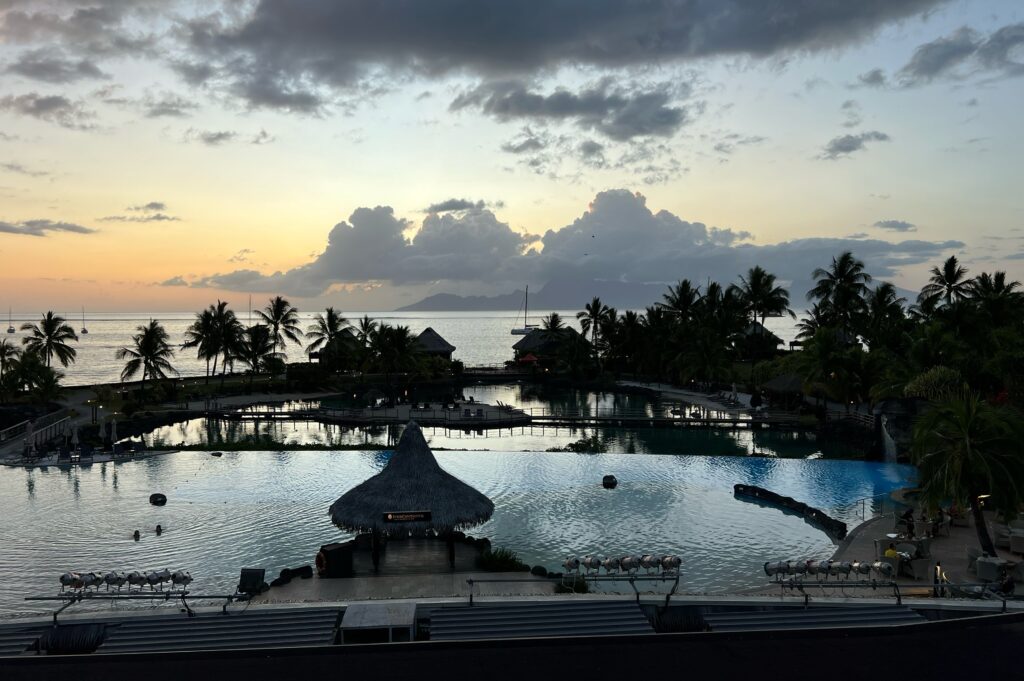
In French Polynesia, where the waters are pure, There are many places that are sure to allure. From Tahiti to Bora Bora, and Moorea too, There are sights and sounds that will leave you anew.
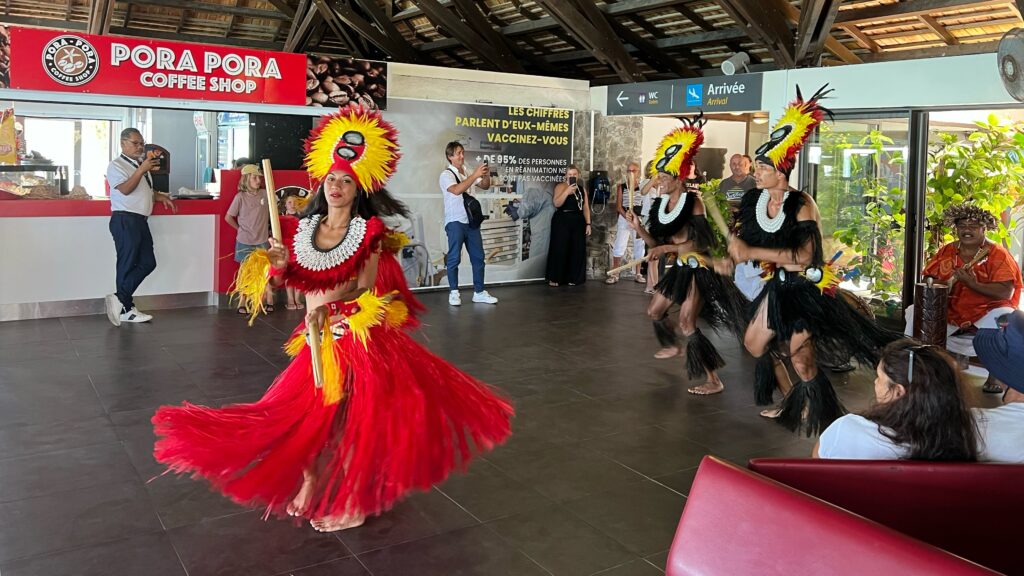
The citizens of French Polynesia are kind, And their culture and traditions are easy to find. Their navy protects the waters and the land, Ensuring that the marine life is always at hand.
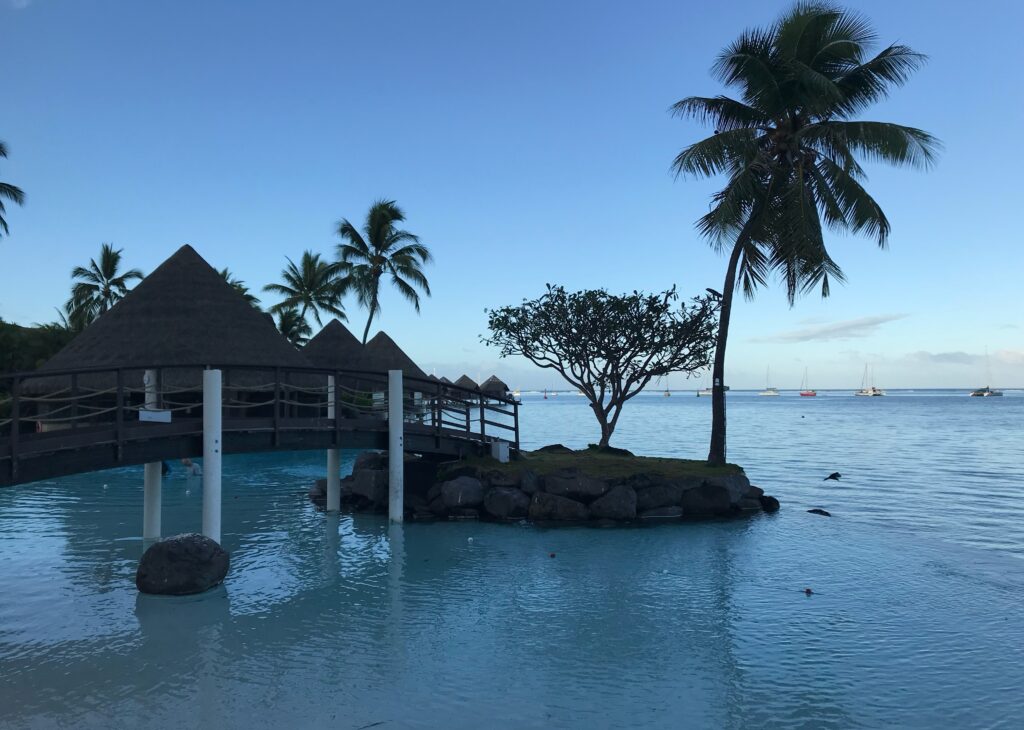
The coral reefs are a sight to behold, With tropical fish and turtles that never get old.
Whales can be seen in the pristine waters, And the beauty of it all will leave you in wonder.
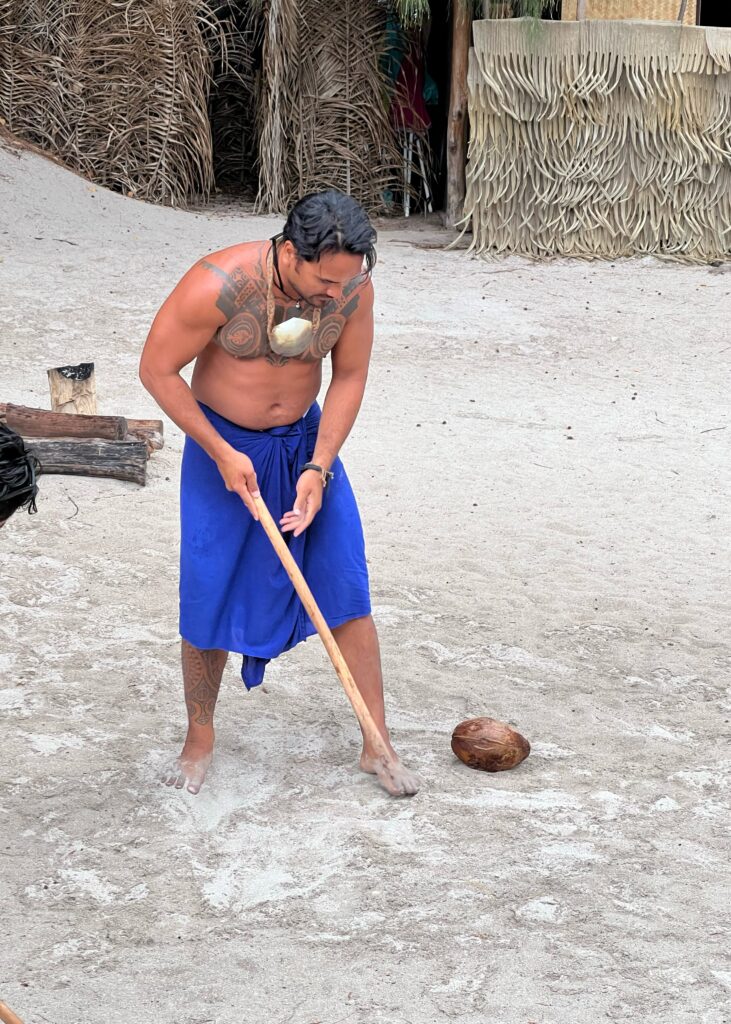
UC Santa Barbara and Berkeley study the coral, While the University of Washington studies it moral. The marine life is abundant and unique,
And the waters are pure, making it a haven for the meek.
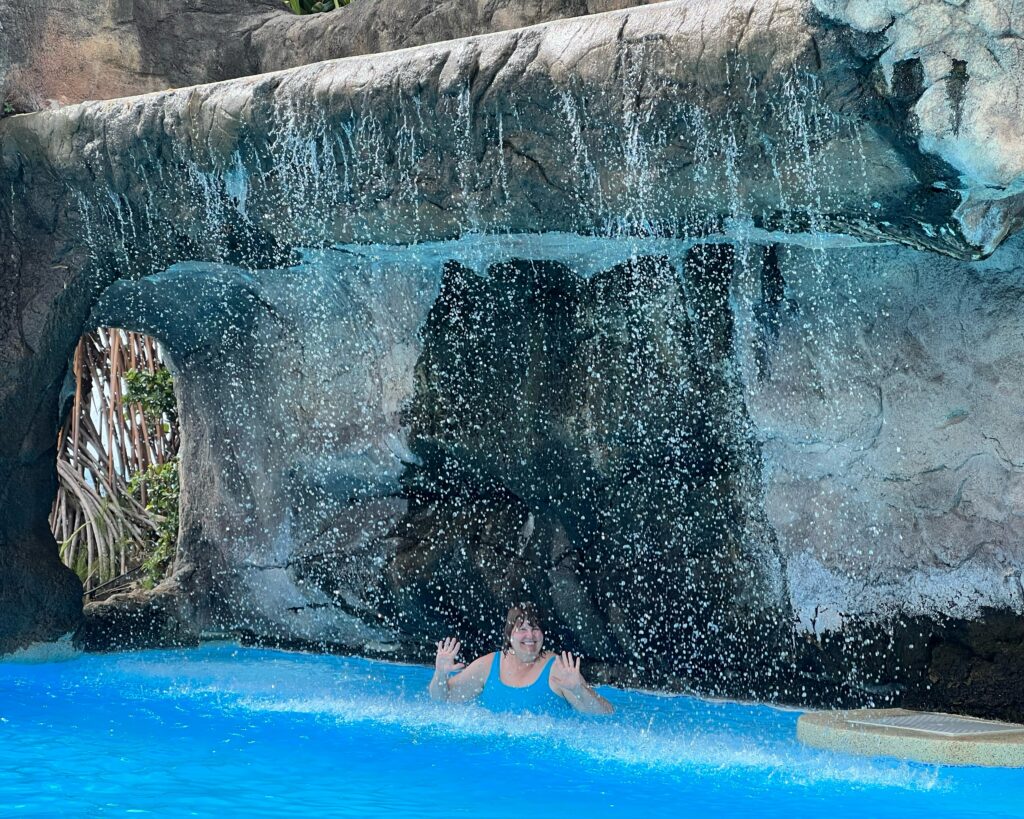
In French Polynesia, there is much to explore, From the coral reefs to the sandy shore.
The marine life is abundant and diverse, And the beauty of it all will leave you immersed.
Teahupo’o
Teahupo’o is a village located on the southeastern coast of Tahiti, an island in French Polynesia in the southern Pacific Ocean. It has been chosen as the host venue for the surfing competition of the 2024 Summer Olympics, which are primarily being held in Paris, France.
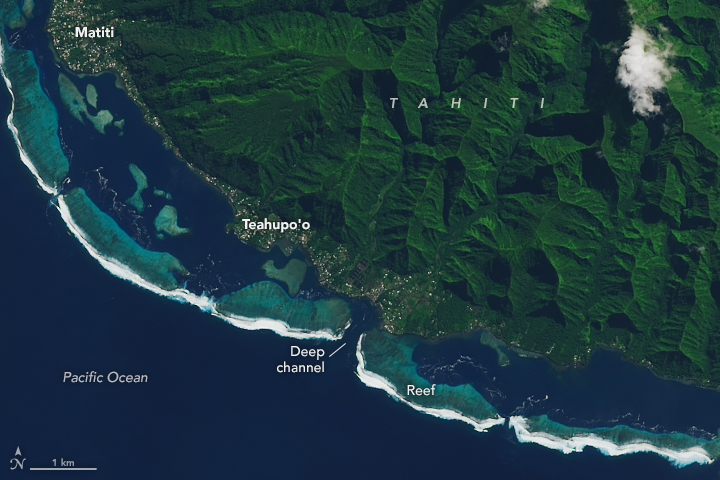
Reasons for Selection as a 2024 Olympic Site
- Exceptional Waves: Teahupo’o is renowned for its powerful and challenging waves, which can reach heights of 2 to 3 meters (7 to 10 feet) and sometimes up to 7 meters (23 feet). These waves are considered some of the best in the world for professional surfing.
- Prestige: The location is highly respected in the surfing community and is known for its consistent and high-quality surf conditions, making it an ideal venue for showcasing the sport at an Olympic level.
- Record Distance: The choice of Teahupo’o also sets a new record for the longest distance between a host city (Paris) and a competition subvenue (Teahupo’o), at 9,800 miles (15,800 km).
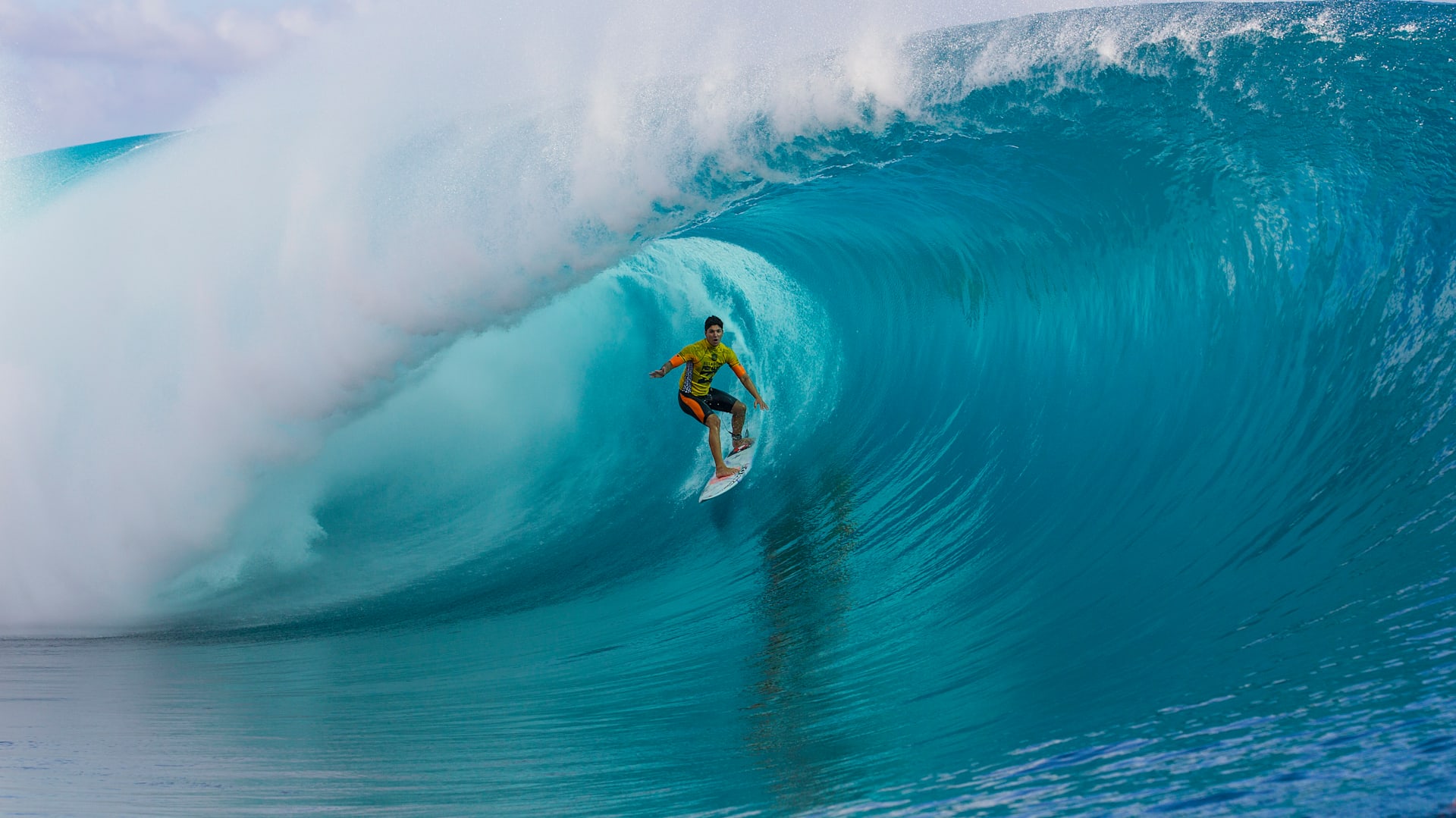
History of Surfing Competitions at Teahupo’o
Teahupo’o has a rich history of hosting significant surfing competitions, particularly events organized by the World Surf League (WSL). Here are some notable competitions held at Teahupo’o by year:
- 1997-1998: The location debuted as a World Qualifying Series event called the Black Pearl Horue Pro.
- 1999: Teahupo’o was elevated to World Championship Tour (WCT) status with the Gotcha Tahiti Pro.
- 2000-Present: The event became known as the Billabong Pro Teahupo’o and has been a regular stop on the WSL Championship Tour.

PHOTOGRAPH BY DAMIEN POULLENOT, WORLD SURF LEAGUE/GETTY IMAGES
Notable Competitions by Year
- 1999: First WCT event, won by Mark Occhilupo.
- 2000: Kelly Slater’s first win at Teahupo’o.
- 2000-2006: Women’s competition held alongside the men’s event.
- 2022: Women’s competition returned to Teahupo’o after a long hiatus.
- 2023: Most recent WSL Championship Tour event, won by Jack Robinson (men’s) and Caroline Marks (women’s).
Teahupo’o has also been the site of numerous other surfing achievements and records, including Laird Hamilton’s ride on August 17, 2000, which is credited as the “heaviest wave” ever ridden at the time.
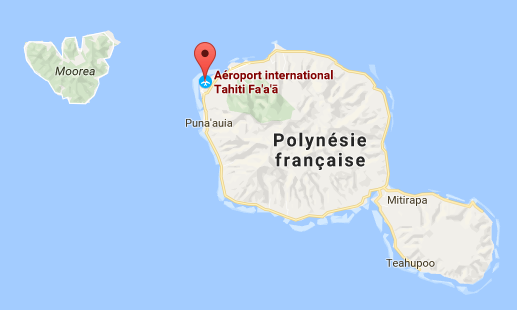
The surf at Teahupo’o is located directly on the island of Tahiti, so there is no need for a significant boat journey from another island to reach it. However, boats are commonly used to access the specific surf break at Teahupo’o due to the nature of the reef and the waves.
Travel Time by Boat
The travel time by boat to the surf break at Teahupo’o from the nearby shore is relatively short. Typically, it takes about 10 to 15 minutes by boat to reach the waves from the shore or nearby docking points. This quick trip allows surfers to navigate the challenging reef safely and position themselves optimally for catching waves.
Regular Boat Services
Boats regularly take surfers to the waves at Teahupo’o. These services are an integral part of the local surfing culture, providing safe and convenient access to the surf break. Local operators, such as Teahupoo Excursion Taxi Boat, offer various tours and services, including ferrying surfers, photo and video crews, and providing towing services for advanced surfers and competitors.

Local Community Reaction to Teahupo’o as an Olympic Venue
The decision to host the 2024 Olympic surfing competition at Teahupo’o in Tahiti has elicited a range of reactions from the local community, reflecting both enthusiasm and concern.
Environmental Concerns
One of the most significant issues has been the environmental impact, particularly the construction of a new aluminum judging tower. Local residents, including a coalition of fishermen, farmers, surfers, and other citizens, have expressed strong opposition to this project. Their concerns center on potential damage to the coral reef, which is a critical part of Teahupo’o’s marine ecosystem. Protests, petitions, and social media campaigns have been organized to voice these concerns.

Economic Opportunities
On the positive side, some locals see economic benefits from the Olympics. The influx of visitors and the associated spending can provide financial opportunities for residents. For instance, locals can rent out their homes to athletes and tourists, and offer boat services to ferry spectators to prime viewing spots[2]. Additionally, infrastructure improvements such as new roads, bridges, and internet cables are seen as lasting benefits for the community.
Mixed Reactions
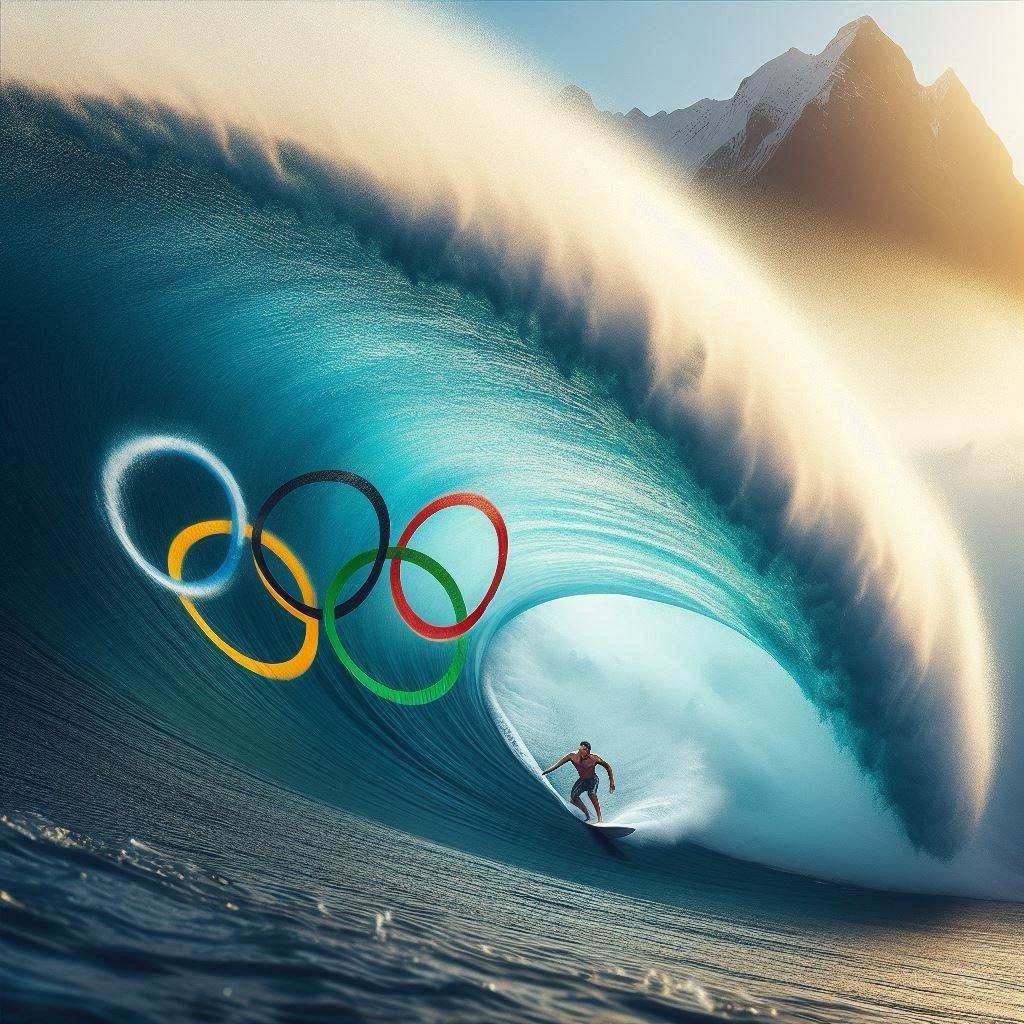
Despite the potential economic benefits, the overall reaction remains mixed. Some residents appreciate the increased security and infrastructure improvements, while others are frustrated by the environmental impact and the disruption to their daily lives. The construction of temporary facilities, such as a large parking lot on previously agricultural land, has also been a point of contention.
Community Actions and Responses
In response to the protests, the Olympic Committee made some concessions by scaling down the size and weight of the new judging tower to minimize its environmental impact. However, the decision to proceed with the construction has not fully alleviated local concerns.

Conclusion
The local community in Teahupo’o is divided over the 2024 Olympic surfing event. While some residents welcome the economic opportunities and infrastructure improvements, others are deeply concerned about the environmental impact and the disruption to their traditional way of life. The ongoing dialogue between locals and the Olympic organizers highlights the complexities of hosting such a major international event in a small, environmentally sensitive community.
In summary, Teahupo’o is a world-renowned surfing location chosen for the 2024 Olympics due to its exceptional waves and prestigious status in the surfing community. It has a long history of hosting major surfing competitions, further cementing its reputation as a premier surfing destination. Boats are commonly used to access the surf break, and the journey typically takes about 10 to 15 minutes from the shore. You can get more information on Teahupo’o at resort pool bars where surfers discuss their adventures.
Breakdown of 2024 Olympic Surfing Competitions
Men’s Competition

Gold Medal Match
- Winner: Kauli Vaast (France) Kauli Vaast was born in Vairao, Tahiti, and grew up in a family deeply connected to the ocean. He first rode a surfboard with his father at the age of four and began surfing independently by the age of six. By eight, Vaast had surfed the challenging waves of Teahupo’o for the first time and won a local surfing competition, igniting his passion for competitive surfing. He is 22 years old. Kauli Vaast has benefited from a strong support system, including his family and the local surfing community in Tahiti. His sister, Aelan Vaast, is also a professional surfer, and their mutual encouragement has been a significant factor in his development. Vaast has been coached by various local and international coaches who have helped him refine his technique and competitive strategy.
- Score: 17.67
- Runner-up: Jack Robinson (Australia)
- Score: 7.83
- Conditions: The waves were challenging, often exceeding 10 feet, providing a rigorous test for the surfers.
- Country Represented: France (Gold), Australia (Silver)
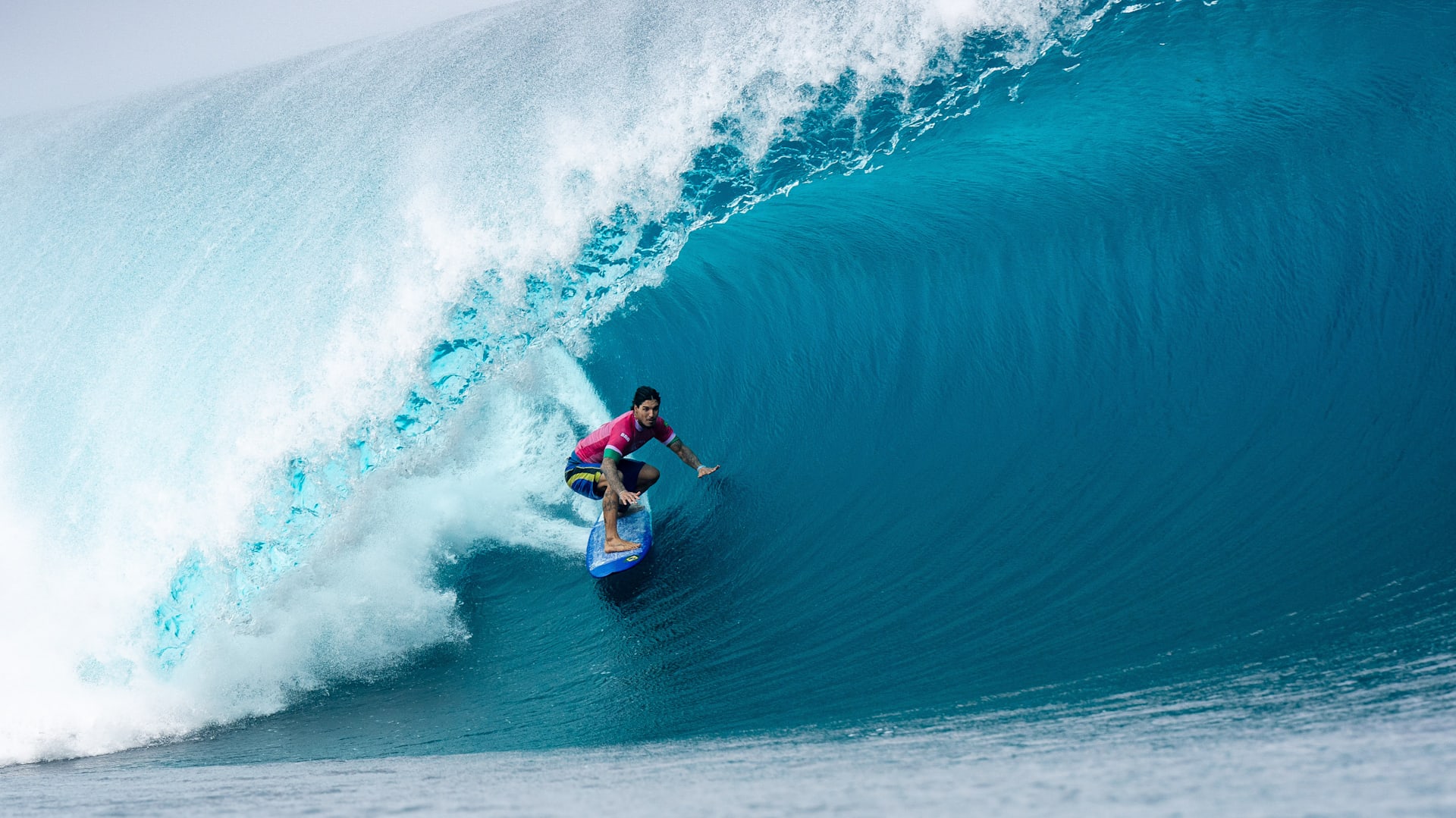
Bronze Medal Match
- Winner: Gabriel Medina (Brazil)
- Score: 15.54
- Runner-up: Alonso Correa (Peru)
- Score: 12.43
- Country Represented: Brazil (Bronze), Peru (4th place)
Women’s Competition
Gold Medal Match

- Winner: Caroline Marks (USA). Caroline Marks is an American professional surfer who has made significant achievements in the sport from a young age. She is the youngest woman to qualify for the World Surf League (WSL) Championship Tour and has consistently performed at a high level in various competitions. She is 22 years old from
San Clemente, California and is Goofy-footed (right foot forward on the surfboard). Earlier in the year she took third place at the Tahiti Pro, at the same location used for the 2024 Olympics. Caroline Marks has been coached by USA Surfing head coach Chris Stone, who has been instrumental in her development and success. Stone recognized Marks’ potential from a young age and has been a guiding force in her career. Additionally, her family, particularly her brothers, have played a significant role in her surfing journey, providing support, encouragement, and feedback. - Score: 10.50
- Runner-up: Tatiana Weston-Webb (Brazil)
- Score: 10.33
- Conditions: Similar to the men’s competition, the waves were powerful and demanding.
- Country Represented: USA (Gold), Brazil (Silver)

Bronze Medal Match
- Winner: Johanne Defay (France)
- Score: 12.66
- Runner-up: Brisa Hennessy (Costa Rica)
- Score: 4.93
- Country Represented: France (Bronze), Costa Rica (4th place)
General Conditions and Controversies
- Wave Height: The waves at Teahupo’o were substantial, often exceeding 10 feet, creating challenging conditions for all competitors.
- Environmental Concerns: The construction of an aluminum judging tower led to significant controversy. Local residents and environmental advocates protested against potential damage to the coral reef, which they feared could disrupt the ecosystem and increase levels of ciguatera, a toxic algae. Despite protests and a petition with over 250,000 signatures, the construction proceeded, causing some damage to the reef.
Participant Feedback

The M/V Aranui 5 is a unique dual-purpose vessel that serves both as a passenger cruise ship and a cargo freighter. The ship offers a variety of accommodations, including suites, deluxe rooms, and dormitory-style cabins. More than 90% of the rooms have private balconies. The ship features a restaurant, three bars (including a panoramic Sky Bar), a lounge, two conference rooms, a gym, a spa, an outdoor swimming pool, and a boutique. It also boasts the first tattoo studio at sea.
- Accommodations: Athletes stayed on the cruise ship M/V Aranui 5, which served as a floating Olympic village. This arrangement was generally well-received, though it was an unconventional solution.
- Judging: The judging was considered fair and professional, with no significant complaints reported from the participants.
Local Community Reaction
- Environmental Impact: The local community remained concerned about the long-term environmental impact of the construction on the coral reefs and marine life. The damage caused by a barge during construction was particularly upsetting to many residents.
- Satisfaction: While some locals appreciated the economic opportunities brought by the Olympics, many were dissatisfied with the environmental consequences and the disruption to their traditional way of life.
Summary
The 2024 Olympic surfing competitions at Teahupo’o showcased exceptional talent and thrilling performances in one of the world’s most iconic surf spots. However, the event was marred by environmental concerns and logistical challenges. The local community’s mixed reactions highlighted the complex balance between hosting a global event and preserving environmental and cultural integrity.



Some of Mr. Trump’s rivals and their allies have seized on the Save America legal payments, accusing him of using small-dollar donations intended for another purpose to pay for his lawyers. 웹툰